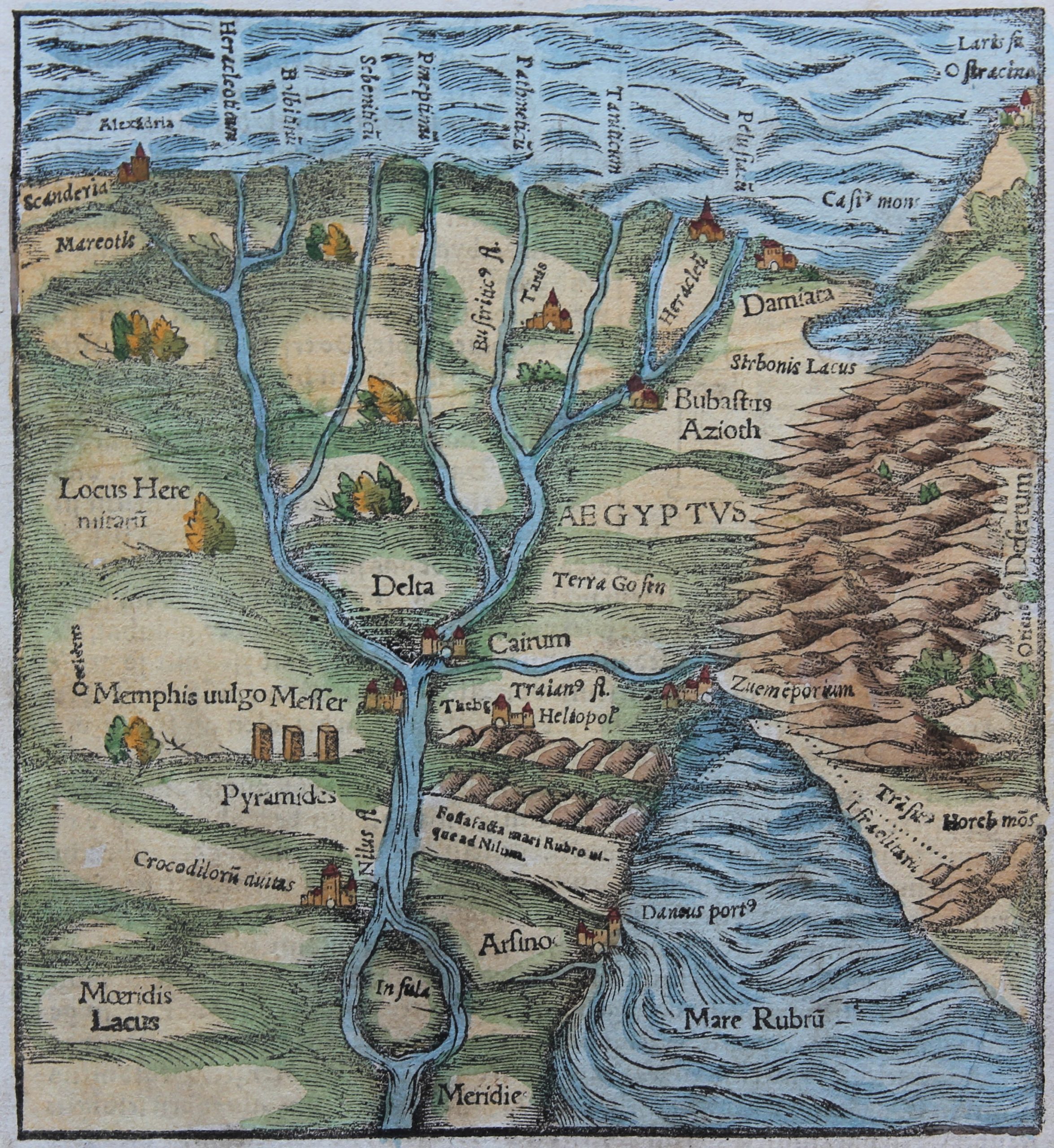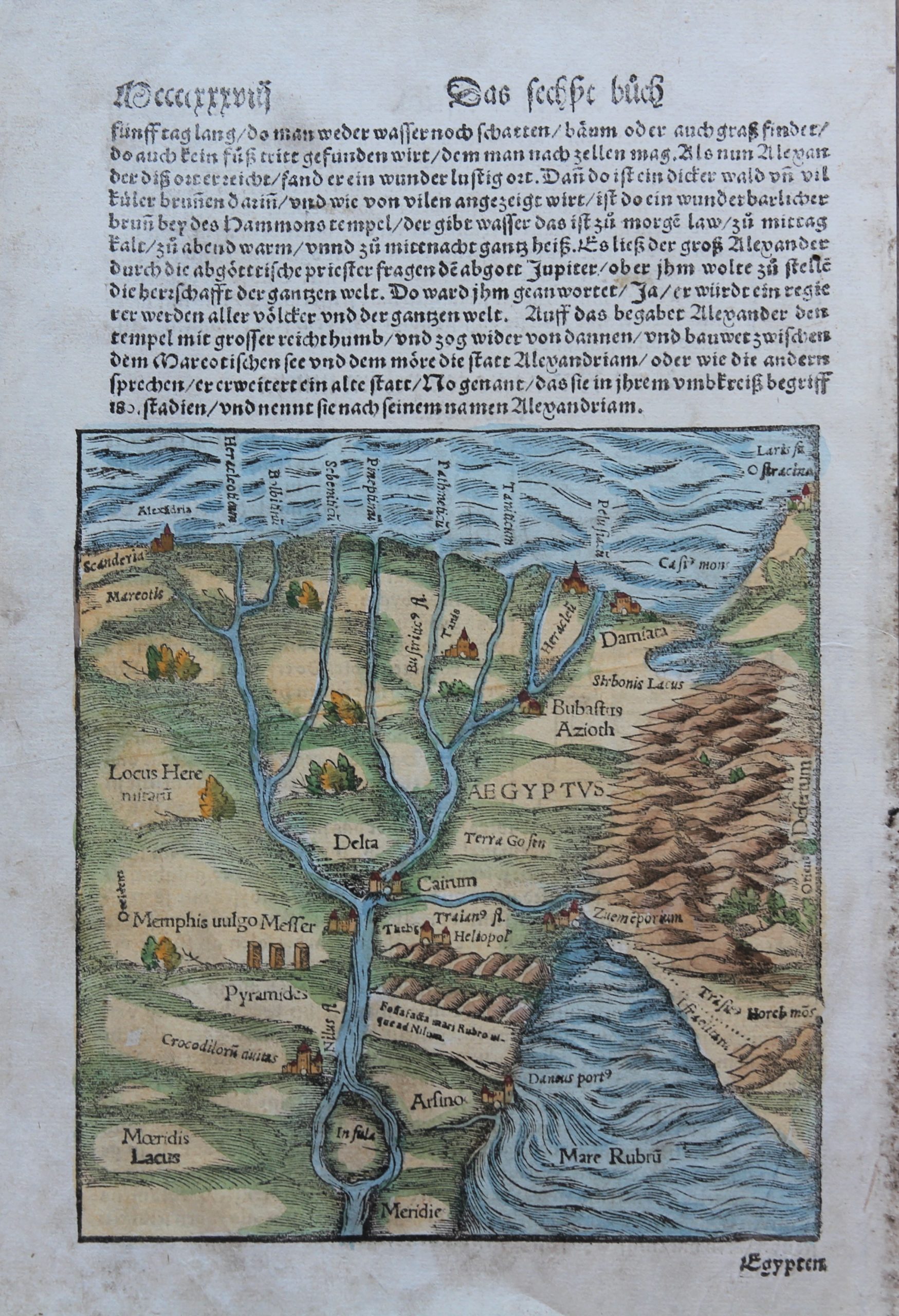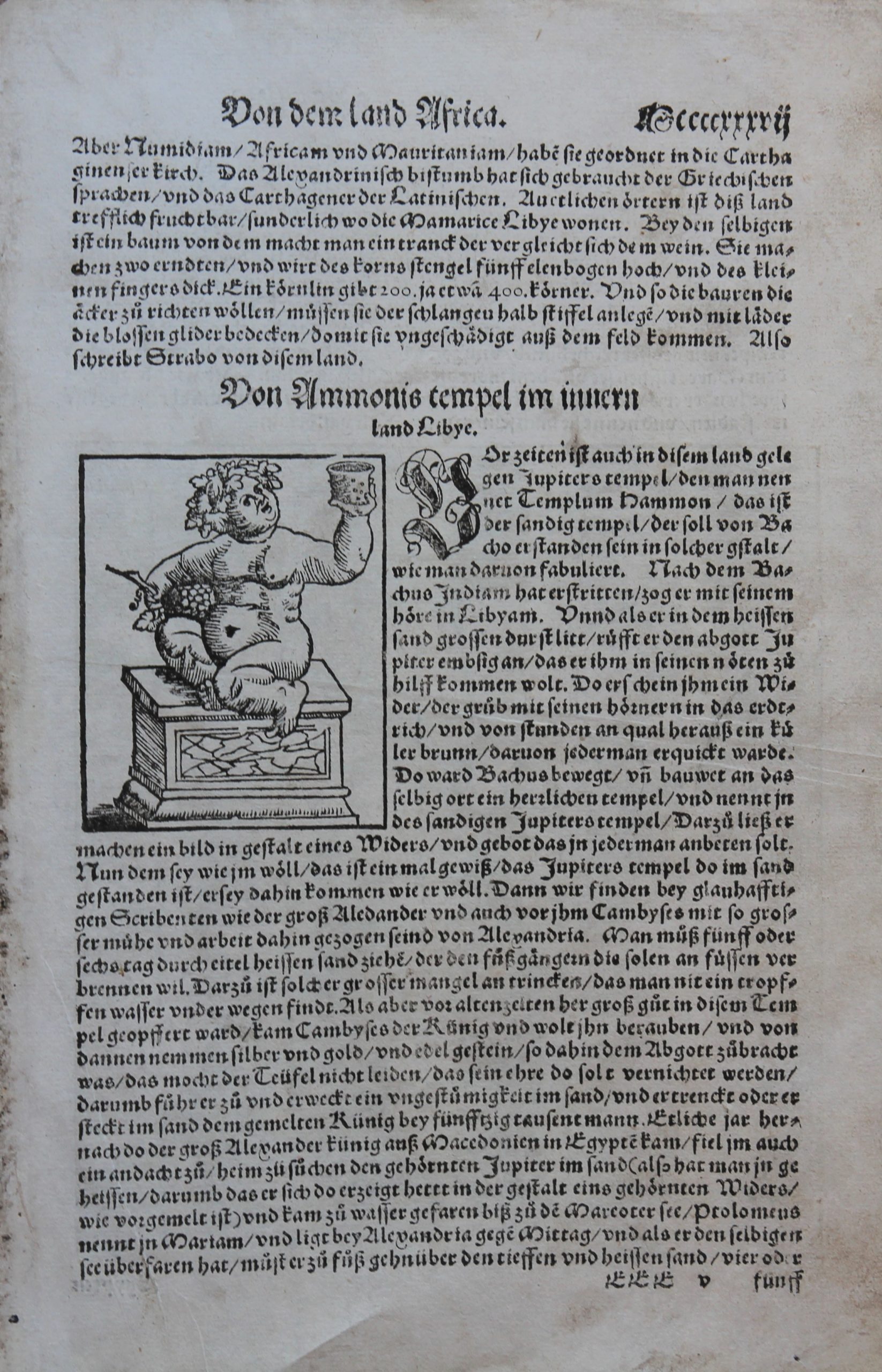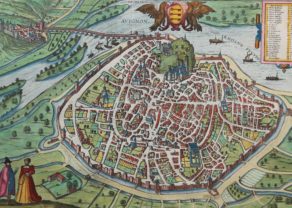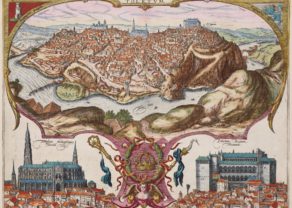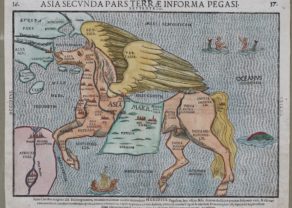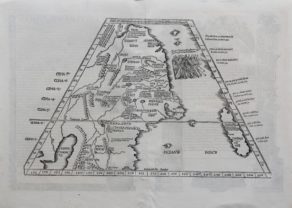Egypt
Rare and exceptional
Detail
Date of this map: 1558
Dimensions (without margins): 16,1 x 17,6 cm
Dimensions (of the sheet, including text): 19,8 x 30,8 cm
Condition: good woodcut engraving. Sharp colours. Delicate paper and wide margins. Some age-toning.
Condition rating: A
Verso: text in German with statute of Bacchus
From: Cosmographei oder beschreibung aller länder …, Basel, 1558
In stock
Münster, his Cosmographia and Egypt
Th Cosmographia by Sebastian Münster (1488–1552) from 1544 is the earliest German language description of the world.
It had numerous editions in different languages including Latin, French (translated by François de Belleforest), Italian, English, and Czech. The last German edition was published in 1628, long after his death. The Cosmographia was one of the most successful and popular books of the 16th century. It passed through 24 editions in 100 years. This success was due to the notable woodcuts (some by Hans Holdbein the Younger, Urs Graf, Hans Rudolph Manuel Deutsch and David Kandel. It was most important in reviving geography in 16th-century Europe. Among the notable maps within the Cosmographia is the map “Tabula novarum insularum”, which is credited as the first map to show the American continents as geographically discrete.
This small but exceptional map shows North Egypt. It pictures the Nile Delta, Cairo, Alexandria, the pyramids, Memphis and Thebe (Heliopol) and the Mare Rubu (Red Sea).
